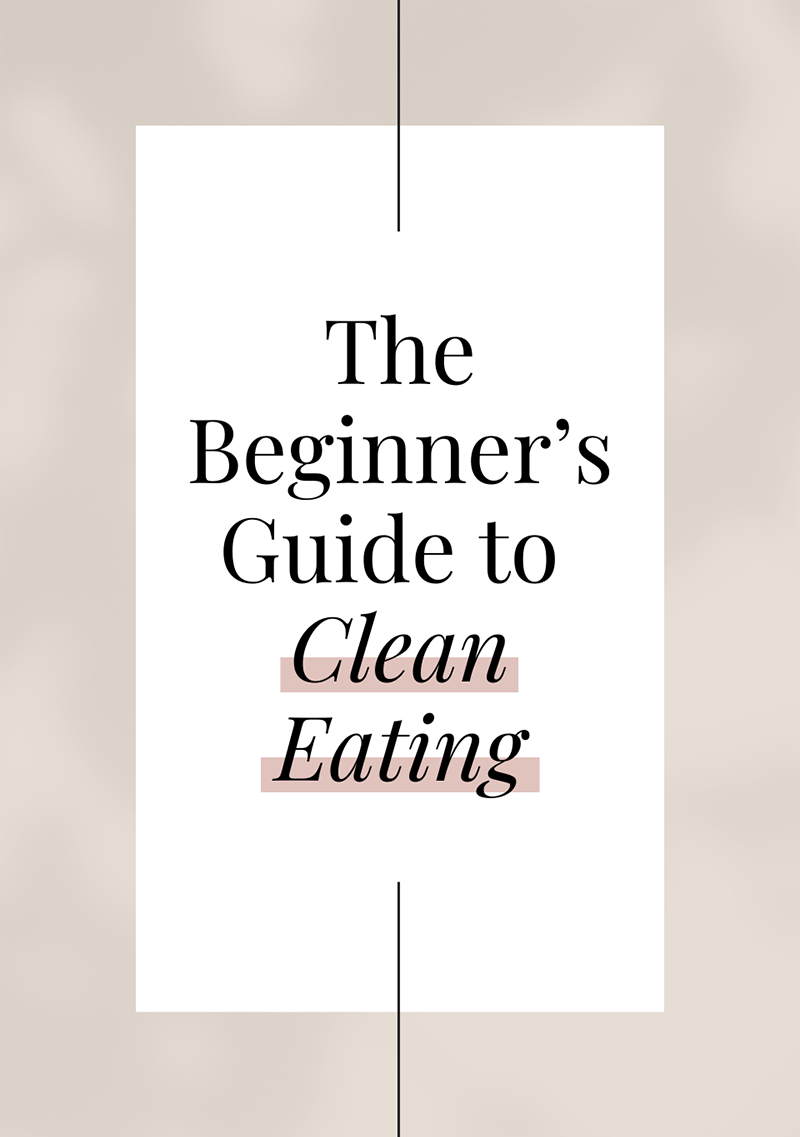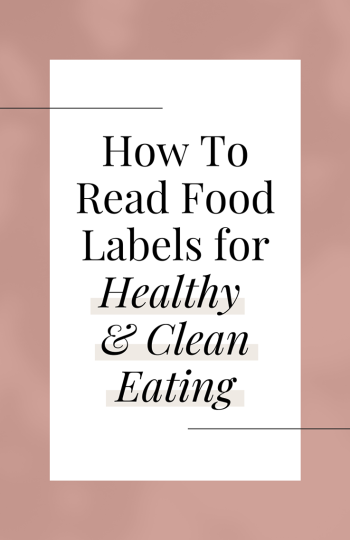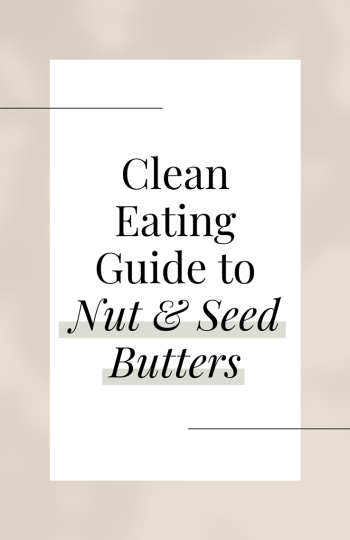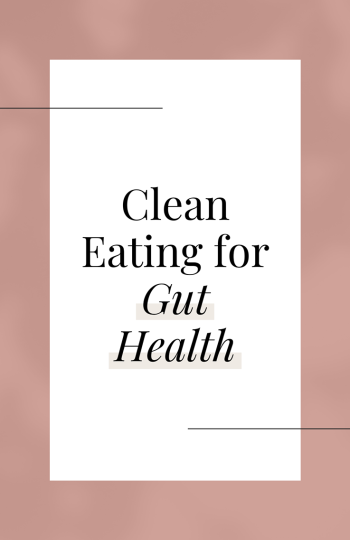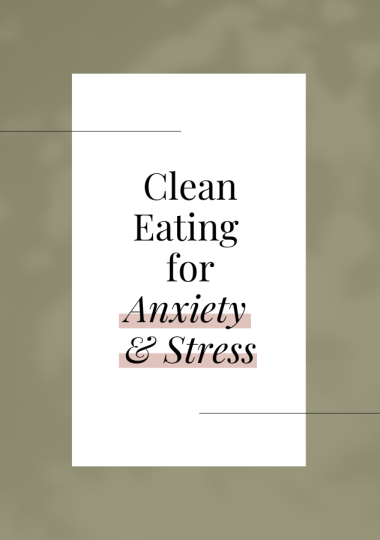I talk a lot about my passion for clean eating — but what does that mean? This post is designed to help you understand what clean eating is all about, how I got started on my own clean eating journey, and tips – big and small – for you to get started on yours.
So, What is Eating Clean?
Clean eating is a lifestyle choice that focuses on eating more fresh, whole, and unprocessed foods, as well as foods with tons of nutritional benefits. Specifically, when you eat clean, you’re eating the most nutrient-dense foods, since those are the ones that are best-suited to fuel your body. You’re also limiting foods (as best as possible) that don’t offer a ton of nutritional benefits, including processed foods and foods with unnecessary ingredients like refined sugars, additives, preservatives, and fillers.
Why I Started Eating Clean
My journey to eating clean began in 2018 when at 26, I was diagnosed with a rare lifelong genetic disease called Gaucher Disease. It took five long and frustrating years to get to the correct diagnosis. In the years leading up to my diagnosis, I tried countless medications and lots of food elimination diets to help alleviate the gut issues and stress on my body and figure out what was wrong. By the time I was correctly diagnosed, my spleen was six-times the average size, my liver was double its normal size, and I suffered from chronic fatigue, low energy, digestive issues, and brain fog.
This diagnosis encouraged me to take a fresh look at my diet and the food I was consuming in hope to help repair my body and feel better. I started caring more about where my food was coming from, what was in it, and – most importantly – how the food I was eating was making me feel, both physically and mentally. In November 2019, I became a certified health coach through the Institute for Integrative Nutrition (IIN). Since then, I’ve made it my mission to help others learn how to eat clean and feel like their best, healthiest selves. I understand that no two people are the same and my goal is to be inclusive, accessible, and approachable.
Clean Eating + Ingredients
A big part of clean eating is understanding ingredients and knowing how to read ingredient labels. I also want you to be mindful about foods that can cause more harm than good to our body. I personally limit dairy, especially mass-produced and not organic dairy, as well as gluten (ex. white flour) because these can become inflammatory to our bodies over time. In addition, I tend to limit my consumption of soy products, as many are mass-produced and genetically modified and soy can affect our endocrine system. I also make sure to avoid overly processed and refined oils (ex. soybean, canola oil, vegetable oil, etc.) and to pick healthier more nutrient dense oils like extra virgin olive oil, unrefined or virgin coconut oil, avocado oil, and ghee.
Clean Eating + Bio Individual
Everyone is unique and different and it’s important for each person to focus on what works for them specifically. The journey to clean eating is a personal one that requires you to really listen to what your body is telling you and to understand what works for your lifestyle. Clean eating is not something you do 100% of the time…it’s just not possible and that’s why it’s a sustainable lifestyle. Clean eating is all about balance and about figuring out what makes you feel your best self.
I want to make one thing very clear: clean eating is NOT a diet or the answer to your weight loss problems. While some people might lose weight by clean eating, that is not the goal of it. I eat clean because it gives my body the most nourishing foods to help me crush it throughout every facet of my daily life.
What are the benefits of clean eating?
When you eat clean, you’re eating foods that are packed with the nutrients that keep you fuller longer and provide your body with the vitamins, minerals, proteins, and healthy fats that it needs to keep you going. In many cases, people who live a clean eating lifestyle often find themselves feeling better, healthier, and more energized. Eating clean can improve brain and heart health, lead to a stronger immune system, and give you more sustained energy.
So many of the foods we consume and that are sold in grocery stores, are full of chemicals and additives, lacking in sufficient nutrition, and are so highly processed ot filled with pesticides before they even hit the shelves. That is why I want to share my knowledge with all of you, so you have the knowledge you need to know exactly what you’re putting into your body!
Which foods qualify as being “clean?”
By now you probably have a general idea of clean eating. Let’s talk about what foods I refer to as “clean” with this helpful list:
Clean Foods…
- Are super nutrient-dense
- Are comprised of real, naturally-occurring ingredients with names you recognize
- Are organic or non-GMO whenever possible
- Don’t have any artificial dyes, coloring, or flavor enhancers (including natural flavors)
- Don’t have any fillers or gums (ex. guar gum), thickening agents, or preservatives
- Don’t use inflammatory oils (canola, soybean, vegetable, etc.)
- Don’t have artificial sweeteners (ex. sucralose) or refined sugar (ex. cane sugar, sugar) in products other where you would expect to find them like desserts (looking at you, tomato sauce)
Small changes to help you kickstart your clean eating lifestyle
Clean eating is about balance. And as I mentioned before, it is not possible to eat clean all the time and you should never restrict yourself from enjoying foods you love. Clean eating is all about making small changes and having those small changes create a positive impact on your lifestyle. I am a firm believer that you don’t need to spend a ton of money to do this. Start with swaps of items you use regularly or when you finish a product, change it out for something with a clean label. If you’re wondering where to get started and how to make some of those small changes in your own life, I recommend trying some of these strategies:
- Try to actively recognize which foods make you feel sluggish versus which foods give you energy
- Start getting comfortable reading food + beverage labels. Start with a few every time you grocery shop and make a note of ingredients you don’t recognize and then look them up in my ingredient guide
- Go through your pantry and read the labels of the products you already have and ones you use regularly. Over time, as you finish a not clean item, swap it out and replace it with a “clean” version
- Eat the rainbow! A colorful, nutrient-rich plate is also the key to a happy body as different colored fruits and vegetables give your body a variety of nutrients
- Try adding more vegetables into your regular meal plans. I highly recommend joining a platform like Misfits Market that helps you save money on organic fruits and vegetables
- Purchase pasture-raised eggs, 100% grass-fed meats, and organic milk (the highest quality kind possible) all of which offer you the most nutrient dense versions of that product
- And of course, try some of my clean recipes on GIRLS WHO EAT!
Tips for shopping for clean foods and beverages
My #1 piece of advice for eating clean is to read the labels and to pay attention to the ingredients! If there are words you don’t know or ingredients you’ve never heard of, that’s probably a strong sign that you don’t want to purchase that item. If an ingredient confuses you, look it up in my guide! Here are some more suggestions around what to buy:
- Visit local farmers markets or smaller grocery stores (they tend to carry smaller and cleaner brands) whenever you can.
- Shop seasonally. It tastes better, it’ll save you money, and it’s better for the environment.
- Shop frozen fruits and veggies. Not only will it save you money; frozen fruits and veggies often contain more nutrients than non-frozen options.
- Familiarize yourself with The Dirty Dozen™ and Clean 15™ lists!
- The Dirty Dozen is a list of 12 conventional (not organic) fruits + veggies that have the highest amount of pesticides sprayed right onto the part that we eat and these are what you should try to eat organic (pesticides seep into fruits/vegetables)
- The Clean 15 is a list of fifteen conventional (not organic) fruits + veggies that have the lowest amount of pesticides and are what you can buy conventional if you don’t want to buy organic.
Key takeaways to remember about clean eating
Clean eating is a lifestyle choice focused on eating whole, unprocessed, and nutrient-dense foods. It’s shown to have both mental and physical health benefits, and it’s a sustainable way of eating. Clean eating isn’t a one-size-fits-all strategy, and it’s not something you do all the time. Clean eating is about balance, about awareness and mindfulness, and above all, about listening to your own body!
